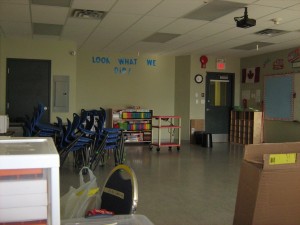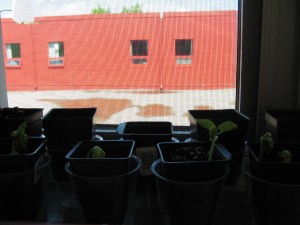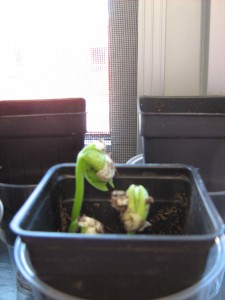Good afternoon!
Students started off their day by watching a clip from the 2013 Tony Awards last night. We have just finished reading Matilda by Roald Dahl as our Read-Aloud book, and then we watched the movie over a few lunch periods. This year Matilda the Musical was nominated for several Tony awards, and students were able to watch a medley of some of the musical numbers. It is interesting to see how quickly we were able to identify characters, just from our knowledge of the book and movie! Check it out below:
http://www.youtube.com/watch?v=Evj1z3l5hco
In Math today the Gr. 4 students worked on modelling larger multiplication problems. When modelling a 2-digit by 1-digit problem, students were encouraged to use base 10 blocks and arrays to assist them.
Eg. 23 x 4
__________ __________ __________ _ _ _
__________ __________ __________ _ _ _
__________ __________ __________ _ _ _
__________ __________ __________ _ _ _
The Gr. 5 students were working on rotations. In order to help visualize rotating an image around a fixed point, students were encouraged to think of a clock face. A clock face can easily be split into quarters (eg. quarter after, half passed, quarter to). Using this as a model, we practiced rotating images. In order to rotate an image you need three things: direction (clockwise vs. counter clockwise), amount (1/4, 1/2, 3/4, 1), and the rotation point. This can be a difficult concept for students to visualize, so many of us traced the shapes, and practiced rotating the cutouts of our shapes. This is a great strategy to help practice rotation.
In Science today we began looking at Wetlands. Students discussed the 5 kinds of wetlands: bogs, fens, marshes, swamps, and shallow ponds. Then we discussed the role of watersheds and wetlands. Wetlands are essential in assisting with the following:
- Wetlands store water
- Wetlands clean water
- Wetlands host a variety of animal and plant life
Wetlands are areas that have poorly draining soils, water-loving plants, and biological processes suited to wet areas. Lakes on the other hand, have well defined beds and banks, inlets and outlets for water to enter and exit, some degree of current or flow, and is reasonably permanent. Areas surrounding lakes can often be wetlands, and sometimes people name wetland areas lakes! This can be a little confusing, so make sure you know the differences.
We also learned about peatlands and non-peatlands today. Peat is layers of decaying plant/animal matters. These layers are very spongy and contain lots of nutrients. Typically mosses grow on top of the peat, and the ground can be very unstable. Peat can be harvested and sold for it nutrients as well. Bogs and marshes are peatlands, while fens, swamps, and shallow ponds are non-peatlands.
Want to learn more? The presentation that we examined today can be found at the following link:
http://prezi.com/scfk3esijgi_/wetlands/
Homework: Read 20 minutes
Spelling Test (Friday)
Math: Gr. 4 – pgs. 286-287 #1-11
Gr. 5 – pgs. 308-310 #1-8
Spelling Words: continents, innocent, contents, consent, contest, notice, tennis, insect, stone, scent




